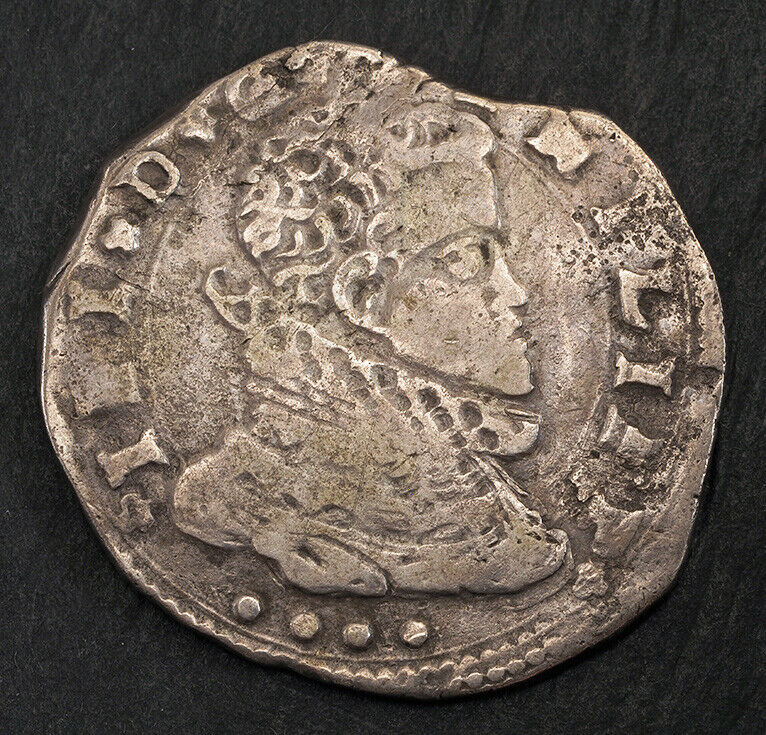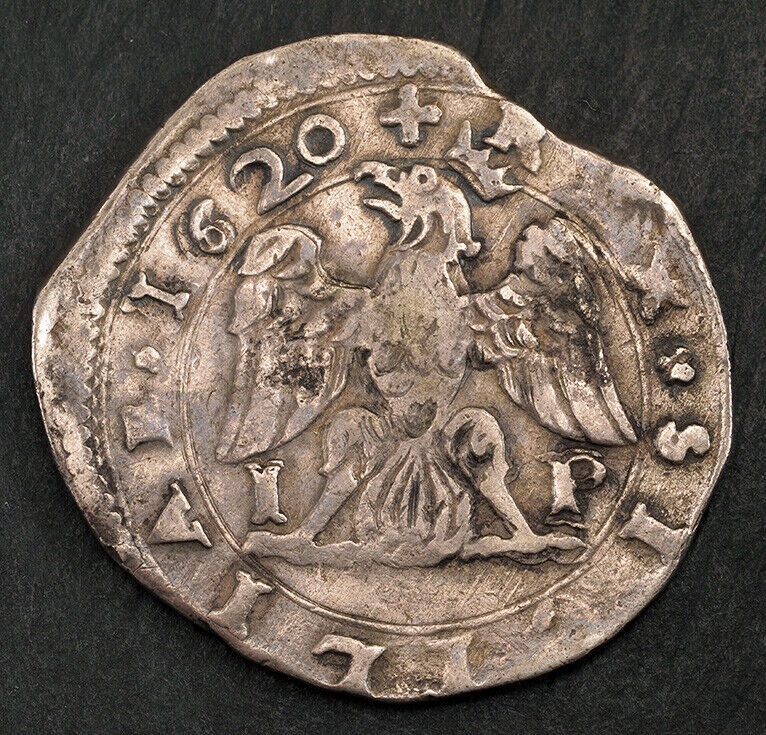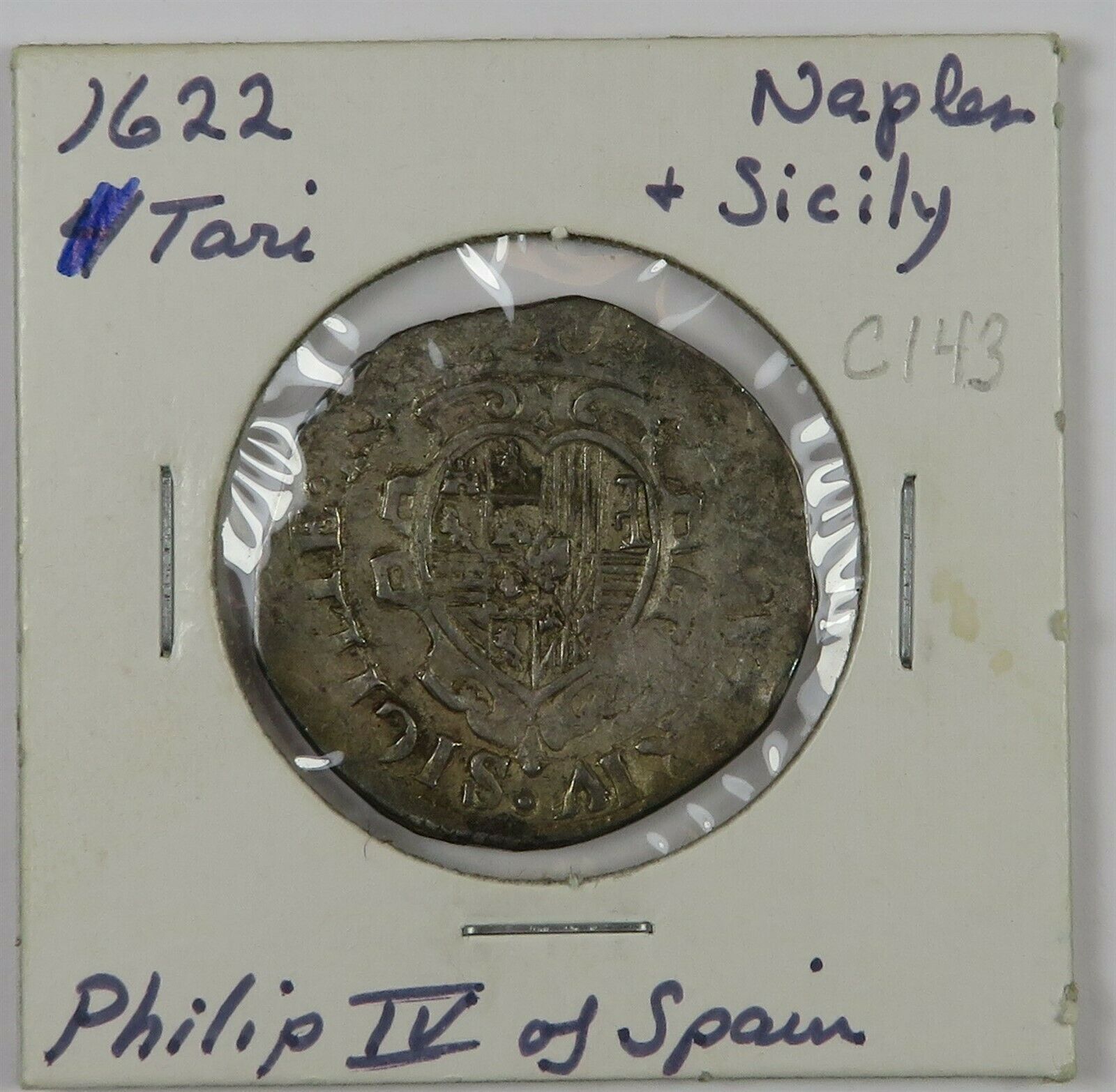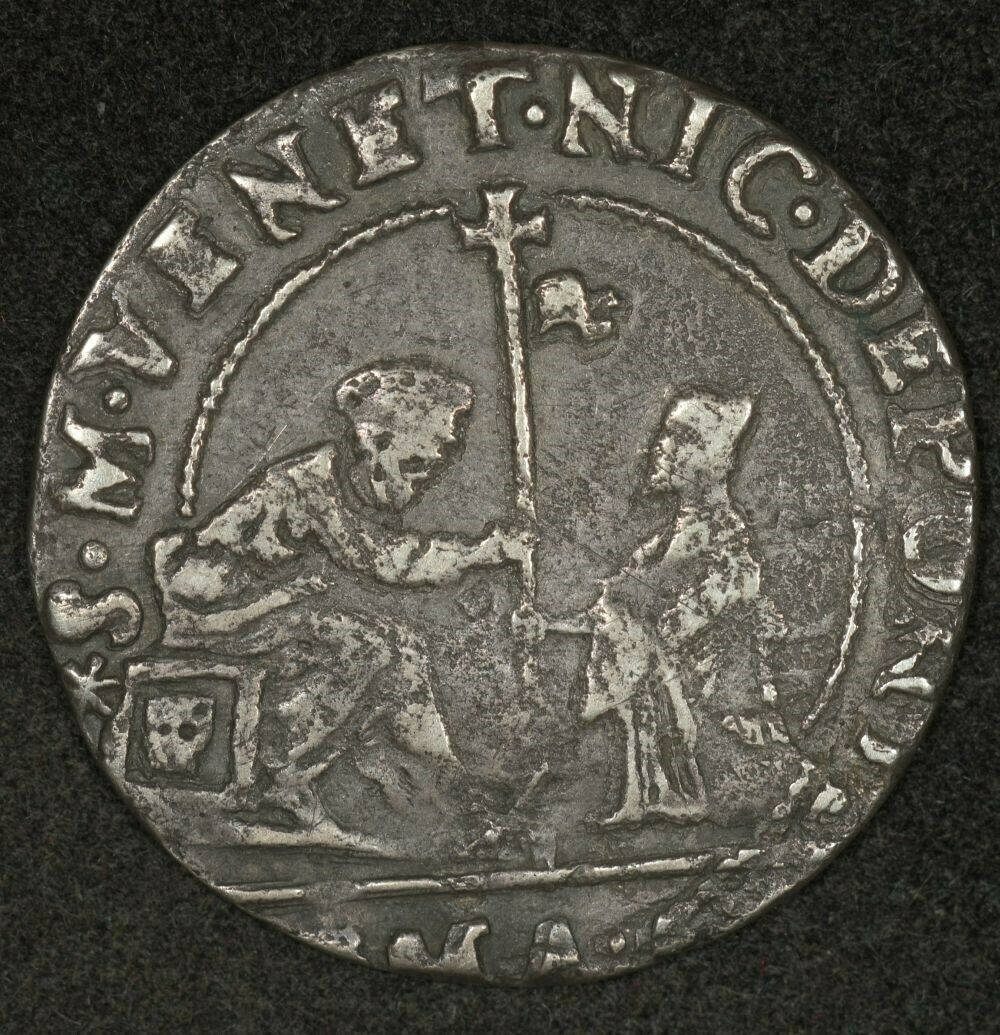-40%
1620, Kingdom of Sicily, Philip III of Spain. Silver 4 Tari Cob Coin. Messina!
$ 11.39
- Description
- Size Guide
Description
CoinWorldTV1620, Kingdom of Sicily, Philip III of Spain. Silver 4 Tari Cob Coin. Messina mint!
Mint Year: 1620
Mint Place: Messina
Denomination: 4 Tari
Reference: KM-11 (
5 in XF!
)
Mint Master: Giovanni dei Pozzo (IP, 1611-1638)
Condition:
Crudely sttruck on a cob-like planchet, otherwise VF-aXF!
Weight: 10.21gm
Diameter: 30mm
Material: Silver
Obverse:
Armored bare bust of Philip III in high ruff right.
Legend: + x PHILIPP x [°°°°] x III x D x G x
Reverse:
Crowned heraldic eagle of the Kingdom of Sicily looking left. Mint master´s initials (I-P) split in fields below eagle´s wings.
Legend: + REX x SICILIAE x 1620
Philip IV minted coins with his effigy in the Spanish Netherlands, while in Spain large coins only showed heraldic symbols.
Authenticity unconditionally guaranteed.
Bid with confidence!
Philip III
(Spanish:
Felipe III
;
April 14
, 1578
-
March 31
, 1621
) was the King of Spain and King of Portugal and the Algarves, where he ruled as Philip II of Portugal (Portuguese:
Filipe II
), from 1598 until his death. His chief minister was the Duke of Lerma. Philip III married Margaret of Austria, sister of Emperor Ferdinand II, and like her husband, a member of the House of Habsburg.
Born in Madrid, the son of Philip II of Spain and his fourth wife (and niece) Anna, daughter of the Emperor Maximilian II and Maria of Spain. He shared the viewpoints and beliefs of his father, including his piety, but did not inherit his industry. The diligent old king had sorrowfully confessed that God had not given him a son capable of governing his vast dominions, and that he had foreseen that Philip III would be led by his servants. This assessment ultimately proved correct. In the view of historian J. H. Elliott, his "only virtue appeared to reside in a total absence of vice".
The new king put the direction of his government entirely into the hands of his favourite, the Duke of Lerma, Francisco Goméz de Sandoval y Rojas, and when he fell under the influence of Lerma's son, Cristóbal de Sandoval, the Duke of Uceda in 1618, he trusted himself and his states to the new favourite. Unlike his father, Philip was not interested in the day-to-day business of government. He spent many months each year travelling to different palaces with his court, away from the government centre. His household costs rose enormously at a time of falling income.
He died at Madrid on
March 31
, 1621. The story told in the memoirs of the French ambassador Bassompierre, that he was killed by the heat of a
brasero
(a pan of hot charcoal), because the proper official to take it away was not at hand, is a humorous exaggeration of the formal etiquette of the court.
Only 1$ shipping for each additional item purchased!











